Detroit has a grand tradition of cannibalizing model names. Take the Chrysler 300 letter-series as an example – it was America’s most desirable performance car, only for Chrysler to introduce a “regular” 300 that bore no relation to the performance model even though they looked the same. One of those poseurs is our Pick of the Day, a 440-powered 1968 Chrysler 300 convertible. It is listed for sale on ClassicCars.com by a dealership in Saint-Leonard, Quebec, Canada. (Click the link to view the listing)
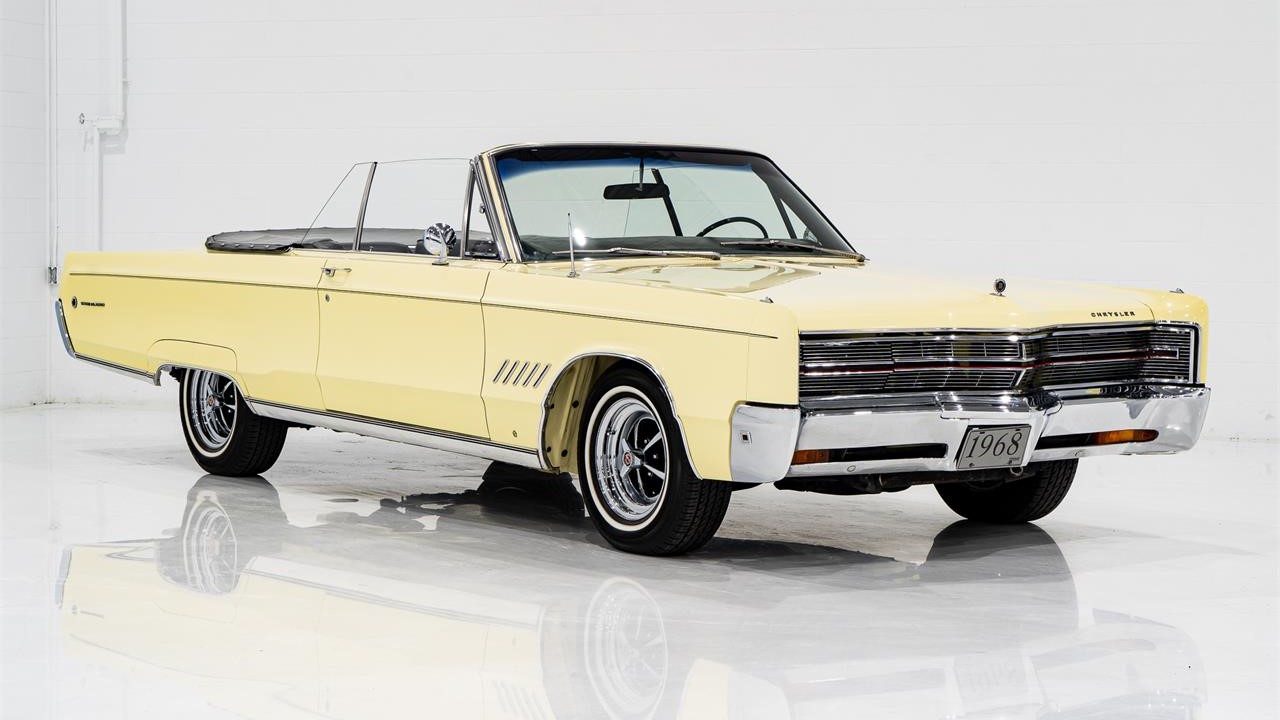
Looking back, both Chrysler and Buick competed in the same price class, but they also diverged in what they offered. On Buick’s end, the Flint company offered a small Buick (something Chrysler said it would never do till, ahem, the LeBaron), with the 1961-63 Special moving up to a mid-size vehicle in 1964. However, they both took sporty ideas and exploited them to the content of bean counters. Buick had offered the Invicta-based 1962 Wildcat two-door hardtop, only to introduce a full line of Wildcats for 1963, including a four-door sedan and hardtop. Despite the availability of “more-doors,” Wildcats came off sportier than the LeSabre, but nothing as stuffy as an Electra.
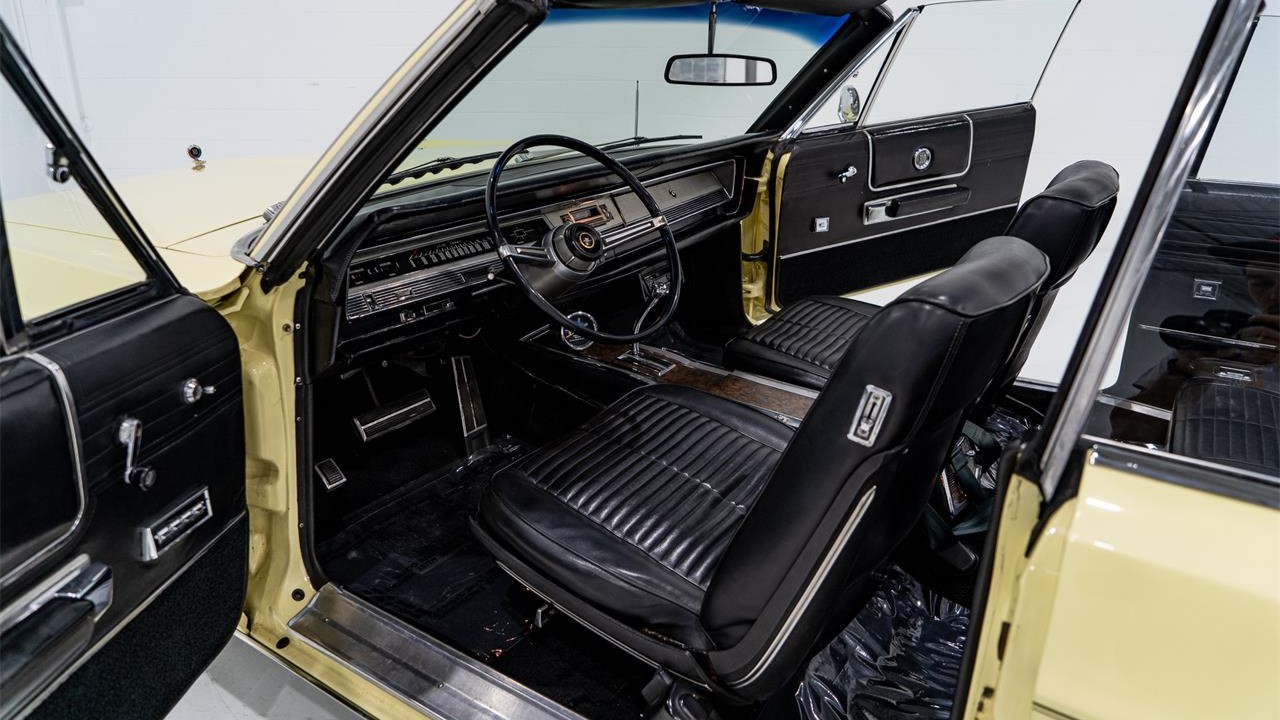
Yet, Chrysler had taken a similar path the year before with the 300. Of course, the 300 letter-series was America’s most powerful car in its time, but it started to be eclipsed by less prestigious cousins with race engines, such as Plymouth and Dodge models with the 413 “Max Wedge.” At the time, the mid-line Chrysler was the Saratoga, but Chrysler decided to replace that with a new model. Why not call it 300 and confuse everyone? While that doesn’t seem to be Chrysler’s modus operandi, it sure appeared that way. The 1962 300 looked almost identical to the 1962 300-H that was available at the time, but its mechanical and interior specs were nowhere near the same. However, the 300 had more sporty pretensions despite the availability of a four-door hardtop and, like the Wildcat, the 300 was not as ritzy as the New Yorker.
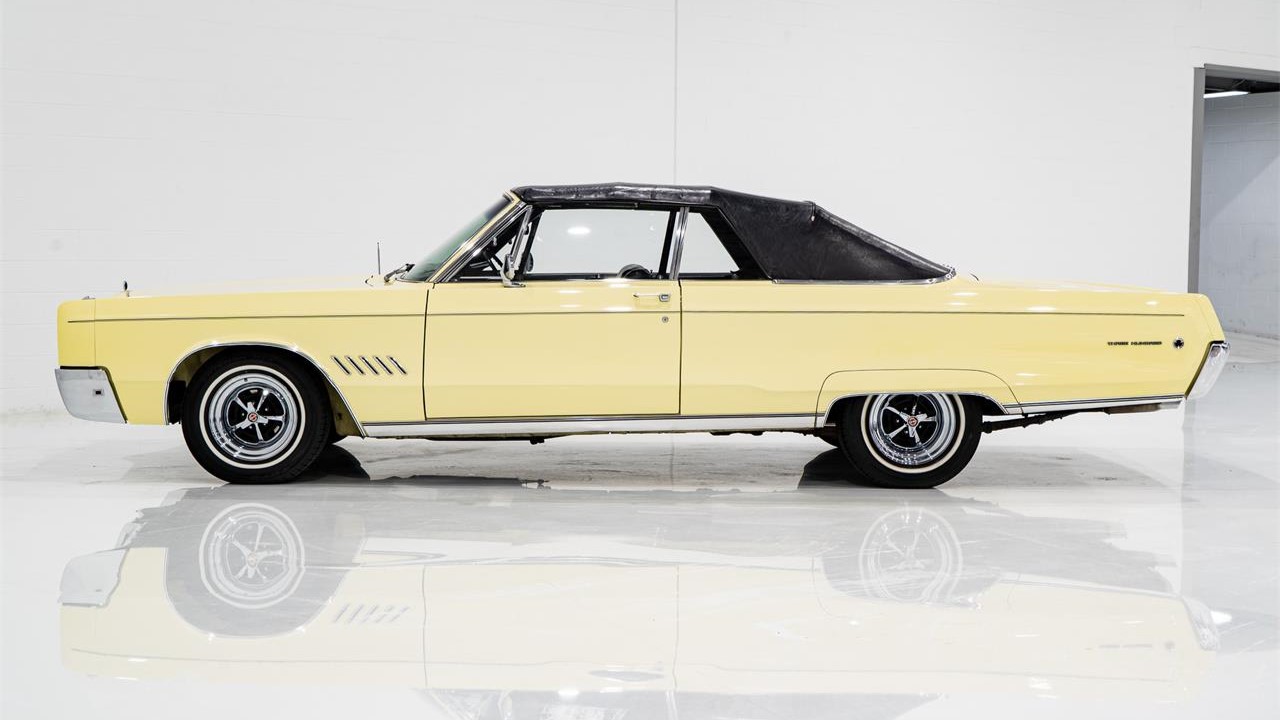
For 1968, the Chrysler lineup was in the second year of its styling cycle. The 300 was available as a two-door “fasttop” hardtop, four-door hardtop, and convertible. The front styling was similar to 1967’s, but now featured hidden headlights, something that would become 300 signature through 1971 when the model was discontinued. Out back, the sloping rear end treatment restyled and now featured horizontal taillights with big round back-up lights inboard.
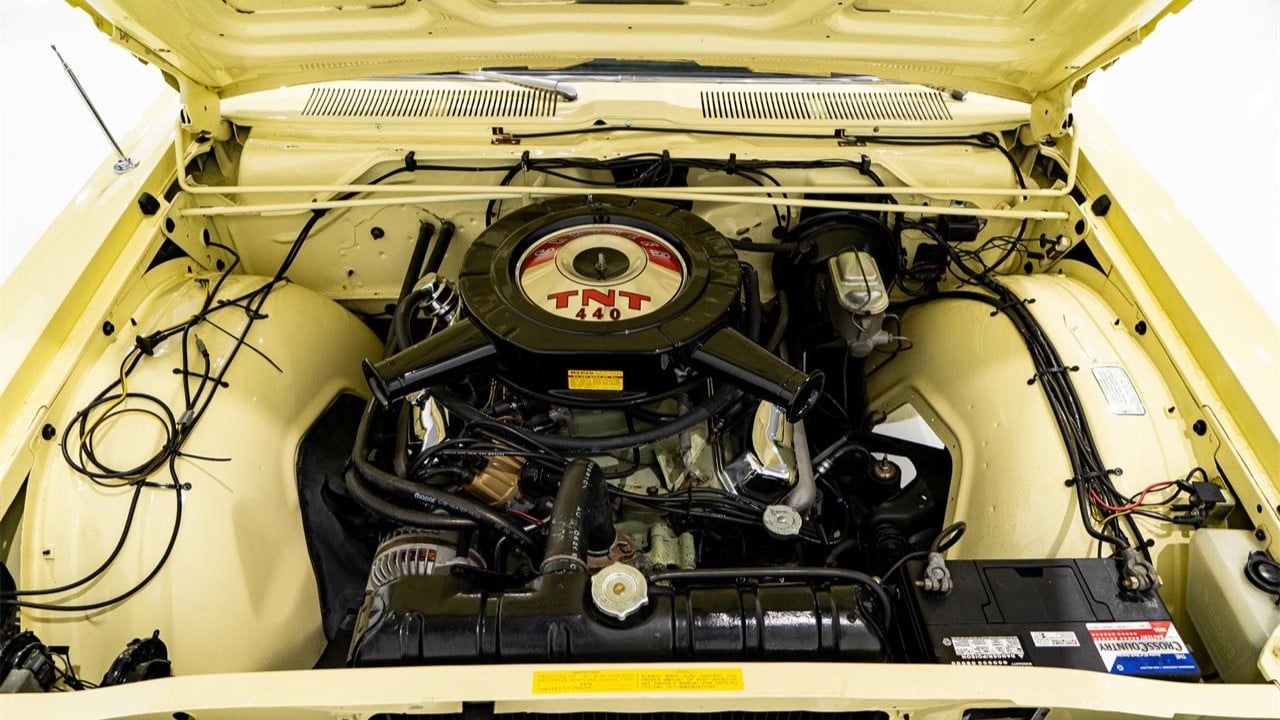
Standard power included a 350-horsepower 440 with single exhaust (quite a step up from previous years), with a 375-horsepower 440 TNT available as an option. Convertibles received a standard power top and glass rear window. All featured all-vinyl contoured bucket seats with center cushion and armrest, though buckets were also available in cloth and vinyl (hardtops only), or leather. Add a console if you desired, or go with the vinyl or cloth and vinyl bench with center armrest for hardtops.
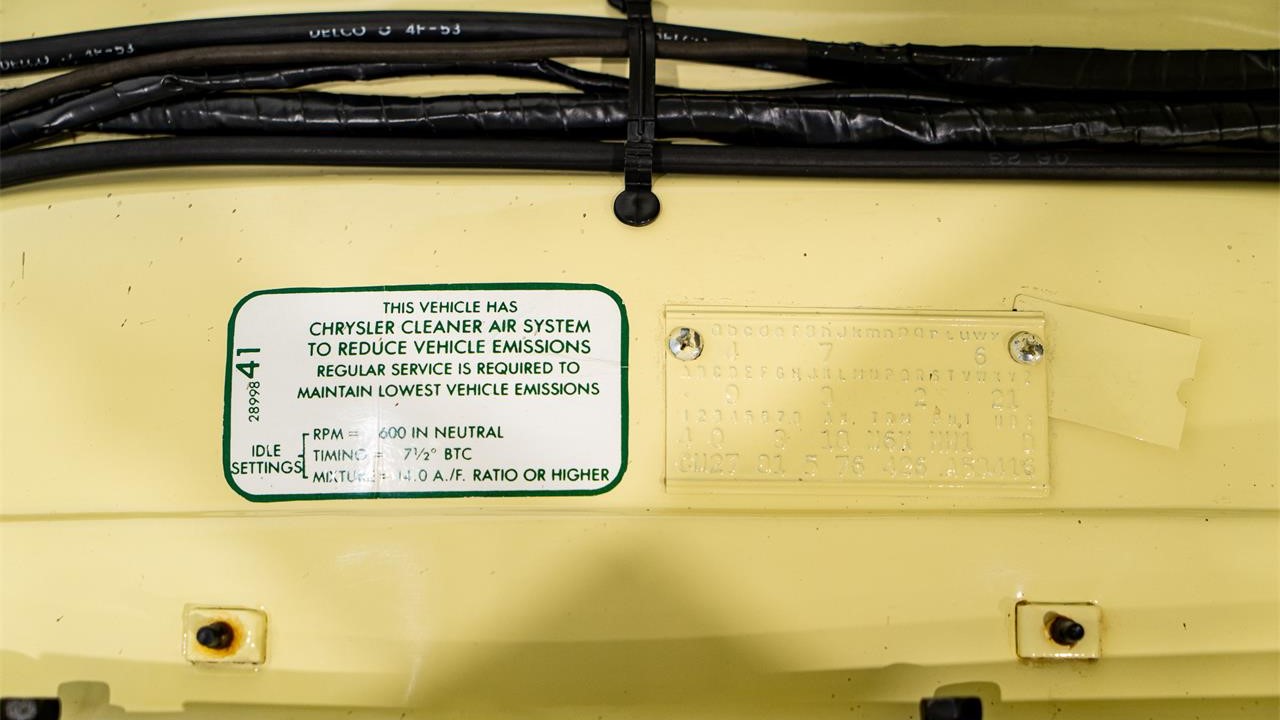
This 1968 Chrysler 300 convertible is painted in Antique Ivory (code H) with black vinyl bucket seats (M6X) surrounding the optional center console. Power comes from the standard 440 with owner-upgraded dual exhausts (don’t be distracted by the TNT decal on the air cleaner – this car has a K in the VIN) backed by standard TorqueFlite automatic. Options include vintage AM/FM radio with CD upgrade, power windows, Road Wheels, fender-mounted turn signals, and remote driver’s side mirror plus manual passenger-side mirror.
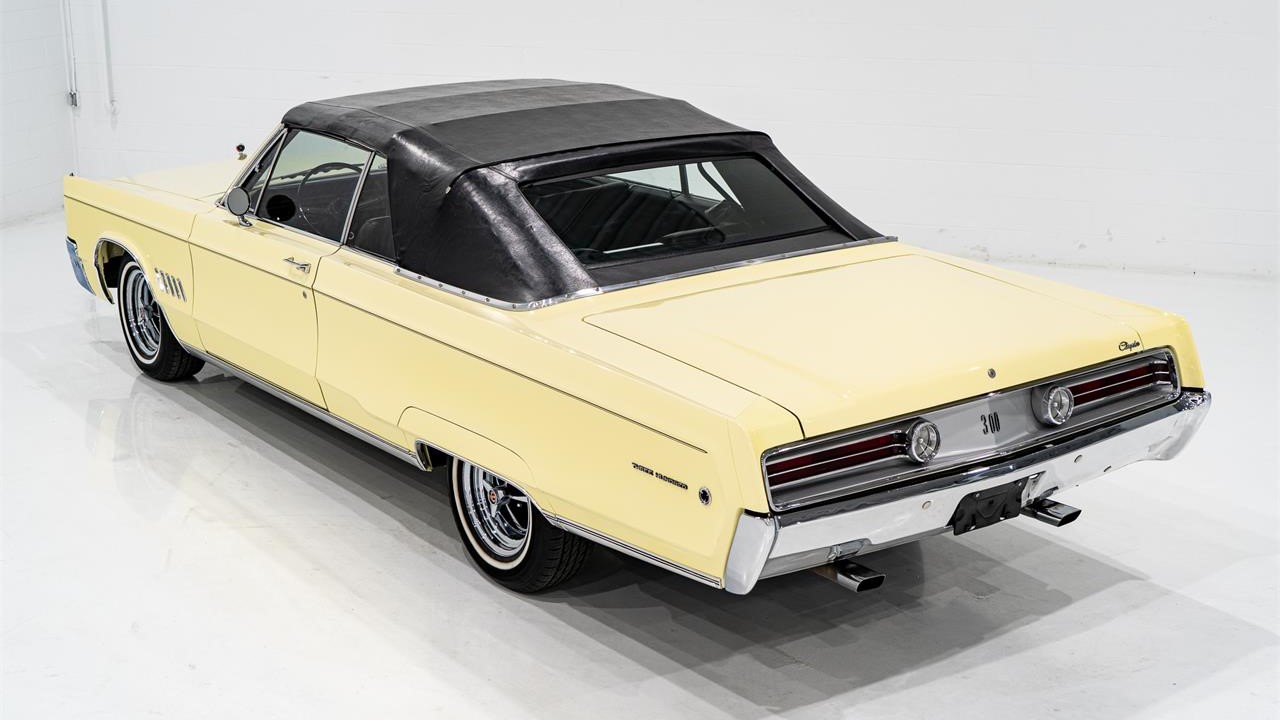
The Chrysler 300 convertible is a classic American boat in the all the best ways: styling, power, and comfort. This thing eats highway miles like a, um, wildcat and, for more smiles, just lower the top. Give the seller $37,500 and you will own a classic American flyer.
Click here for this ClassicCars.com Pick of the Day.



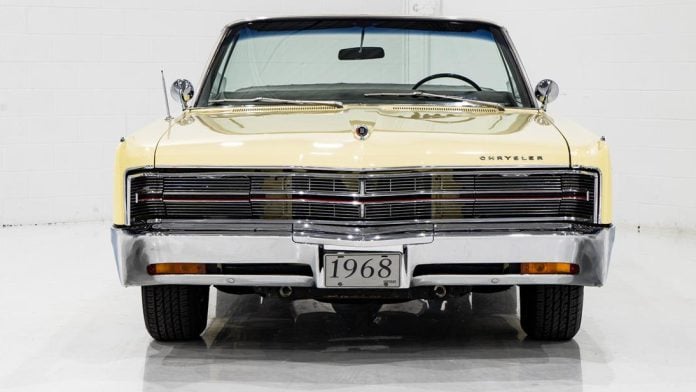


Though purist may disagree with the addition of the non-letter 300s Chrysler seemingly understood the market shift to smaller higher performance models and did the only thing they could do with the 300. With deeper pockets they could have introduced a more worthy competitor to the Buick Riviera which is what I would have voted for. As a Mopar man, I wish Chrysler had the resources of GM and could have pulled off a real Riviera threat. However such was not the case. Subsequent 300s were really nice Wild Cat peers.
I own a 1970 Chrysler 300 convertible with 727 trans and TNT 440 engine !
The car is a stock suviver !
When I bought it the glass back window had inscribed on it ,
“The Chrysler 300”
LAND SHARK
Just when you thought it was safe to go back on the street
Have you got any info on an auto like this ?
I owned a 68 300 2dr the original owner gave me back in ’87. It sat for roughly 7-yrs, needing tires, brakes, exhaust, belts, hoses, ignition wires, ECT. I recurved the distributor, rejetted the original Holley 600 vacuum secondary, installed Magnum exhaust manifolds featuring 2.5″ dual exhaust with turbo mufflers. It was a fun car for 2-years until trading it for the ’65 Coronet 500. The Coronet was sold in ’92 to our friend Jim C who calls it Shaft. Never saw the 300 again. Like you said, great highway car!
My friend nomen abbott love his mopar in is dead now. He is driving his mopar up in heaven.God bless him.
Back in the 60s and many decades before that my family only drove cars from the Chrysler Corporation. We lived in Detroit until 1958. My mom’s side of the family all worked at Chrysler Corporation plants scattered around Detroit, dad’s side at the Ford Motor Company. That’s just the way it was in Detroit at the time. We moved to Southern California and continued driving Chryslers through the 60s. Our last Chrysler was a 1969 300. 69 was the first year for the fuelsage bodies. Ours had the 440 under hood with what I think was a .Carter 4 barrel carburetor. I just a kid, but already was a mini Gearhead. Since you are what you drive, I was a total Mopar man. I knew everything about them, and Fords and GM cars. We had a 17 foot Aristocrat Land Commander trailer and that 69 300 handled it like it wasn’t even back there. When Chrysler started having financial problems, their cars began to show it. Things started being made of plastic and it just wasn’t the same. My first car was a 1969 Mustang Mach l. I wanted an early 70s ‘Cuda or Challenger but they were way out of my price. But that turned out to be great. I loved my Mach I, and I kept it for over 35 years. My parents bought a new 1976 Lincoln Town Car. The difference in the interior quality was much better on the Fords, far better than the Chryslers ever were. The materials Ford used in their interiors wore like steel. From then one our family only drove Fords. But to this day I still have a love for the Chrysler Corporation, I guess I always will.